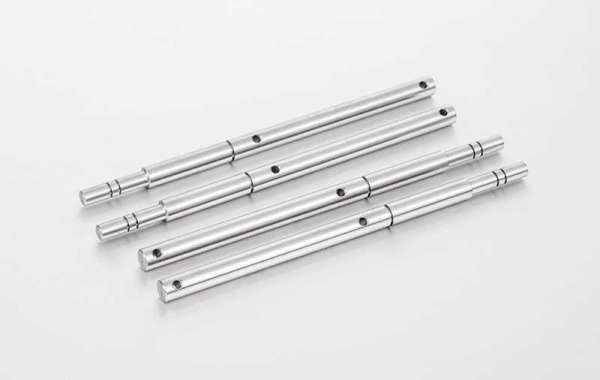The shaft is an important part of the motor, as the link of electromechanical energy conversion between the motor and the equipment, supporting the rotating parts, transmitting the torque and determining the relative position of the rotating parts to the stator. Therefore, the motor shaft must have reliable strength and rigidity to ensure the realization of the preset design function. The following briefly describes various types of motor shafts and their characteristics to provide references for the selection and design of motor shafts.
According to whether there are steps on the shaft classification. It can be divided into two types: optical axis and stepped axis. The optical shaft is often made of cold-drawn round steel, which can reduce the man-hours for machining the outer circle of the shaft, and is sometimes used in micro motors. Stepped shafts can be easily and reliably installed with many different parts. Therefore, most motors use this shaft.
According to the manufacturing method of the shaft blank. It can be divided into round steel shafts (shafts made of hot-rolled round steel), forged shafts (shafts made of forgings) and welded shafts (shafts welded with radial ribs).
According to the combination of shaft and core. It can be divided into a shaft with knurling in the middle, a shaft with a hot sleeve and a shaft with a keyway in the middle. Knurled shafts are used for small motors below 10 kilowatts, which can save the work of machining keys and keyways. However, when the shaft is pressed into the iron core, it is easy to deform the shaft. During the operation of the motor, some knurled rotor cores produce axial movement. This kind of shaft deformation is caused by the tight fit between the iron core and the shaft, and the axial displacement is caused by the lack of interference between the two.
According to the shape of the shaft extension. It can be divided into cylindrical shaft extension shaft, conical shaft extension shaft and shaft extension shaft with half coupling. The cylindrical shaft extension is easy to process and is mostly used in motors. The circular shaft is supplemented with fastening bolts, which require a large amount of processing. However, the equipped transmission wheel is convenient for loading and unloading, and it is mostly used for special motors. Shafts with half couplings are mainly used in hydroelectric generators and large DC motors.
Classified according to the shape of the axis. It can be divided into a solid shaft, a shaft with a deep hole at one end and a shaft with a central through-hole. Solid shafts are most commonly used in motors. The shaft with a deep hole at one end is mainly used for winding asynchronous motors so that the lead wire on the rotor is connected to the collector ring outside the end cover through the hole. Shafts with a central through-hole are mainly used for large motors: in a dual-water internal cooling turbine generator, the central through-hole is also used as a part of the cooling water circuit.
According to the shaft permeability classification. Can be divided into the magnetically permeable shaft and non-permeable shaft. The permeable shaft is mainly used in steam turbine generators. The shafts of other motors usually do not need to be magnetically conductive.
Other classification methods. According to the number of shaft extensions, it can be divided into single shaft extension shaft and double shaft extension shaft; according to the different number of bearings, it can be divided into the single bearing shaft, double bearing shaft and multi bearing shaft.
As a China shaft factory, Ningbo Shitai Precision Machinery Co., Ltd. does not provide customers with high-quality products and services. Welcome to visit our official website.








